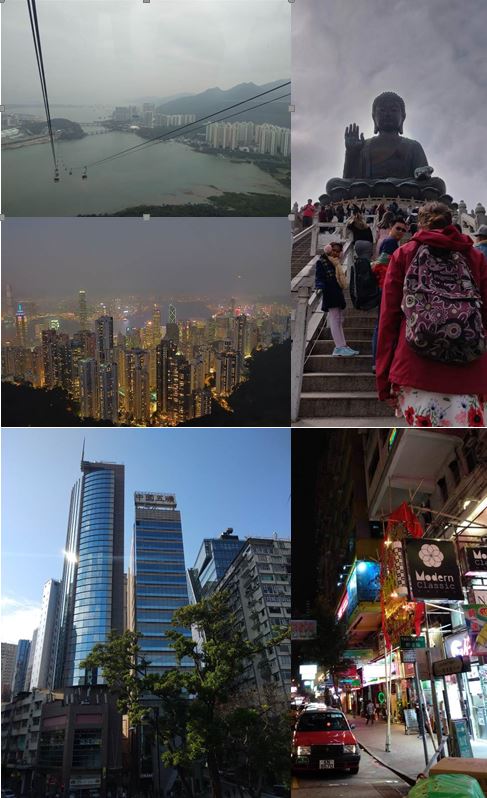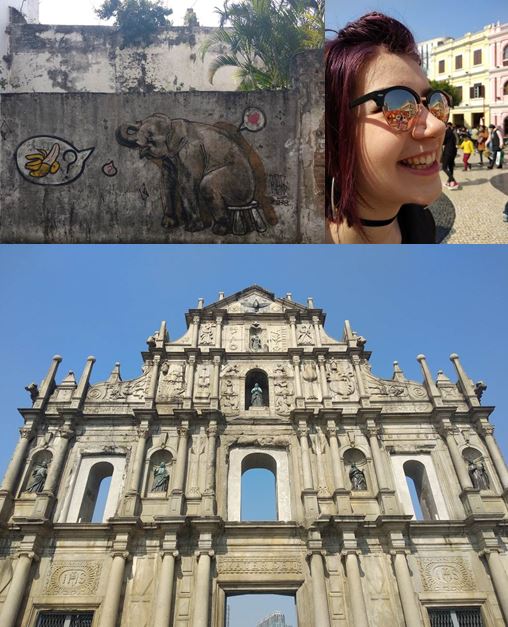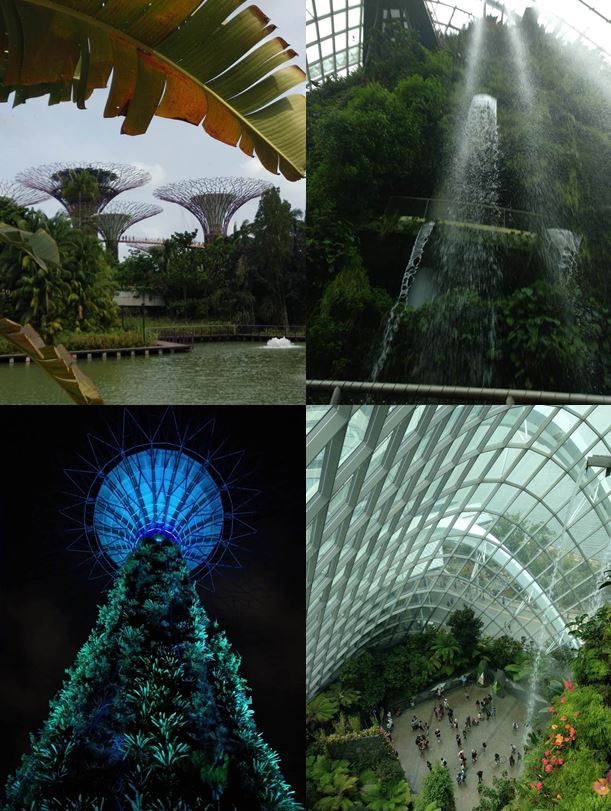Holidays Part 1
Holidays in China are slightly different from in the UK, as Christmas is not celebrated across Asia. Instead, Chinese people celebrate a holiday known as the Spring Festival, or Lunar New Year, in January or February. Universities and schools are off for up to six weeks, and many people travel across the country to return to their families. This year is the Year of the Pig.
During this much-needed holiday we all decided to travel, some of us travelling within China and others going as far away as New Zealand!
On January 19th, I flew to Hong Kong with five friends. Hong Kong is one of the most amazing places I’ve ever been; it’s such a vibrant mix of ethnicities and cultures. It is also one of the most densely populated areas on the planet, with a population of 7.5 million and a density of 6,300 people/km2. It is home to 7687 high-rise buildings – more than anywhere else on the world.
We stayed for four days, seeing all the main tourist sights such as the Tian Tan Buddha at Ngong Ping, known colloquially as the Big Buddha. You can get to the Big Buddha either by walking or by a 30-minute gondola ride over the ocean. Naturally, we chose the scenic and sedentary option. Opposite the Big Buddha in Ngong Ping village there is a beautiful monastery at the top of lots of steps.
The first few days in Hong Kong were almost unbearably warm. Having left Tianjin still in the middle of winter, going directly from –8°C to the low twenties was quite a shock, though many of the locals (still wearing gloves, as 20° is definitely a winter temperature in Hong Kong) gave us funny looks when they saw us in shorts and t-shirts. Regardless, it was nice to pack away the down jackets and dust off the summer clothes!
We also took the tram up Victoria Peak, the highest land on Hong Kong Island. We got a great spot on the viewing platform to watch the sun set and see the Blood Wolf Moon above the city.
On our third day in Hong Kong, we didn’t actually stay in Hong Kong. We took the boat to Macau, and old Portuguese territory which has been reclaimed by China. It is one of very few places in Asia where gambling is legal, earning it the name, ‘Las Vegas of Asia.’ Much of Macau looks and feels like it could be Spain or Italy as the architecture is similar to that of colonial Europe, and it was very strange to think that we were still in Asia. As Macau is a relatively small island, we managed to see many things in just one day, from the beautiful ruins of St. Paul’s church to the rather baroque Venetian Hotel, which had its own mall and even its own Venetian ‘canal’ with small Venetian gondolas on it to add to its authenticity.
Although many people think of Hong Kong as just one island, what is commonly known as Hong Kong actually comprises around 263 islands, though the main financial hub and residential area is on Hong Kong Island. Our final day in Hong Kong was spent taking the Star Ferry across the water from Hong Kong Island to Kowloon, one of the best and cheapest ways to see Hong Kong.
In Hong Kong they speak Cantonese, a language that once had more speakers than Mandarin Chinese. Cantonese is different from Mandarin in several ways, and although they share the same base writing system, Cantonese utilises traditional characters rather than the simplified characters that Mandarin uses. This means that the characters mean the same thing, but are written and pronounced differently. Cantonese also has up to nine tones, whereas Mandarin only has four. Phew!
Next, we flew to Singapore for a three-day stay. We stayed in the Chinatown region, where there was lots of Chinese food and even red lanterns hanging from building to building! Singapore is an incredibly multi-cultural city, with people from all countries with different religions. As a result, there are some amazing buildings, cuisines and a huge variety of temples.
A highlight for me was visiting Gardens by the Bay, an eco-nature park. There are even biomes where different plants grow, and one is even home to the world’s tallest indoor waterfall at 35m high. It was quite refreshing but bizarre at the same time to be surrounded by greenery despite being in the middle of a city. We waited until late evening for the Gardens by the Bay Light Show, an amazing spectacle of different light colours and sequences projected onto the trees, all in harmony with classical music. It was very relaxing.
As much as we would love to have visited a rooftop bar to see the skyline and experience a bit of Singapore’s famously buzzing nightlife, our bank accounts wouldn’t have thanked us. Instead, we took a river cruise at night. There are huge buildings in almost every direction; it was quite a unique way to view the city.
Both Hong Kong and Singapore are not only very different from Tianjin, but also very different from each other. Both Hong Kong and Singapore are island city-states and global financial hubs, attracting a diverse range of people from all countries. Singapore had specific regions such as Chinatown and an Arab Quarter, although in Hong Kong the mix of people felt much more homogenised. In Tianjin, we are used to seeing very few other foreigners, so it came as a surprise sometimes to hear people speaking English, or any language other than Chinese for that matter.
Next stop: Bali, Indonesia!


